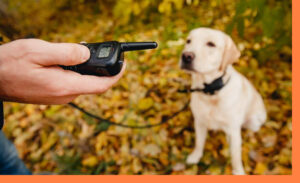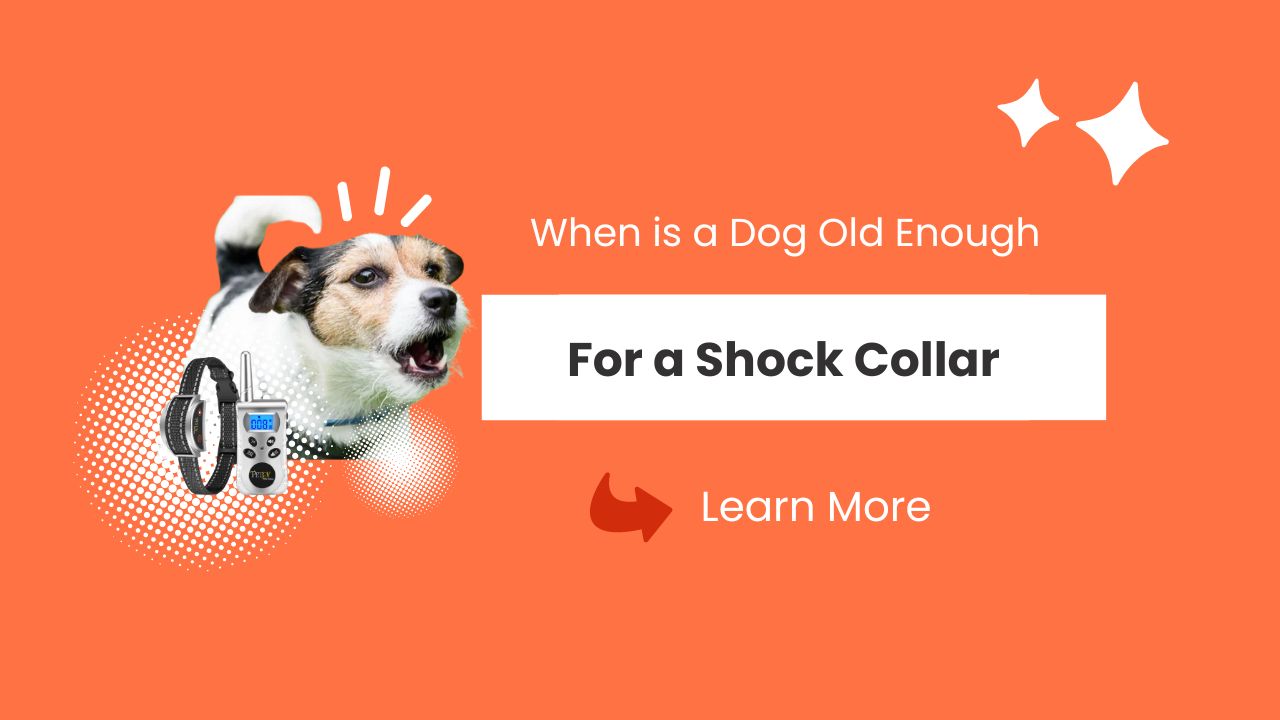Getting a new puppy is an amazing experience. Their little paws, floppy ears, and endless energy make every moment with them special. But as they get older, they can start doing things that might not be so cute anymore. Things like play-biting turning into real biting, cute whining becoming non-stop barking, and digging holes all over your yard.
Raising a puppy is a bit like raising a child. It takes time, teaching, and training to make sure they become well-behaved and happy dogs. Some people use a device called a “shock collar” to help with training.
In this guide, we’ll talk about When is a dog old enough for a shock collar. So let’s get started.

When is a Dog Old Enough For a Shock Collar ?
Deciding when it’s okay to start using a shock collar on your dog is really important. It’s all about making sure your dog stays safe, feels good, and learns well during training. Experts generally recommend waiting until a dog is at least six months old before considering the use of a shock collar.
This waiting period allows the dog to reach a level of physical and mental maturity, making them better equipped to understand and respond to training commands.
Puppies younger than six months are still in their developmental stages, both physically and mentally. They are often more sensitive and may not fully grasp the training process.
Introducing a shock collar too early could lead to confusion, fear, or stress in the puppy, potentially causing long-term behavioral issues or even damaging the bond between you and your pet.
Before using a shock collar, it’s important to teach your dog basic commands like sit, stay, and come using rewards and praise. This helps your dog learn and prepares them for more advanced training with a shock collar if needed.
Additionally, consult with a professional dog trainer who can assess your dog’s specific needs and guide you in the safe and humane use of training tools like shock collars.

Factors to Consider for Shock Collar Training
When you’re thinking about using a shock collar to train your dog, there are some important things to consider. Shock collars can be useful, but they’re not right for every dog or training situation. Here are the main things to think about:
- Age and Size: How old and big your dog is matters. Young puppies and small dogs can be more sensitive to the shock, so it might not be safe for them. It’s best to talk to a vet or dog trainer to make sure it’s okay for your dog.
- Personality and Behavior: Your dog’s personality and behavior matter too. If your dog is easily scared or gets anxious, a shock collar might make things worse. And if your dog is aggressive or reacts strongly to things, shock collars might not be the right choice.
- Training Experience: Shock collars should come later in training, not at the beginning. It’s better to start with teaching your dog basic commands and good behavior using rewards. Shock collars are for specific problems or advanced training after your dog has learned the basics.
- Training Goals: Know what you want to achieve with the shock collar. Are you trying to stop excessive barking, teach your dog to behave off-leash, or set boundaries? Having clear goals will help you use the collar effectively.
- Expert Help: Always get advice from a professional dog trainer who knows about shock collar training. They can help you set the collar correctly and make sure it’s safe and kind for your dog.
- Collar Quality: Get a good-quality shock collar with adjustable settings. Look for ones with different levels, including sound and vibration options. Make sure the collar fits comfortably and won’t hurt your dog.
- Laws and Ethics: Check the rules in your area about using shock collars. Some places have laws against them. Always use shock collars in a way that’s kind and safe for your dog.
To sum it up, be careful when using shock collars and only use them when other training methods haven’t worked. Keep your dog safe and happy, and ask professionals for help when needed.

How To Introduce a Shock Collar To Your Dog
Introducing a shock collar to your dog requires careful planning and consideration. Check these essential steps and factors to ensure a safe and effective introduction of shock collar training.
1.Choosing the Right Collar:
Start by picking a good shock collar for your dog. Ensure it is of high quality, adjustable, and designed to fit comfortably. Think about how big your dog is and how they behave when you choose the collar.
2. Preparing Your Dog for the Collar:
Before using the shock collar, it’s crucial to prepare your dog. Ensure they are already familiar with basic commands like “sit,” “stay,” and “come” through positive reinforcement training.
3.Professional Guidance:
Seek advice and guidance from a professional dog trainer or behaviorist who specializes in shock collar training. They can give you useful advice, adjust the collar’s settings, and show you how to use it properly.
4.Familiarizing Your Dog with the Collar:
Gradually introduce the shock collar to your dog without activating the shock feature. Allow your dog to wear the collar for short periods daily, making them comfortable with the sensation and minimizing anxiety.
5.Starting Training with Low Stimulation:
Begin actual training with the shock collar by starting at the lowest stimulation level. Use it in a controlled, low-distraction environment to reinforce known commands. Always apply and release the stimulation promptly in connection with the command, helping your dog learn effectively.

